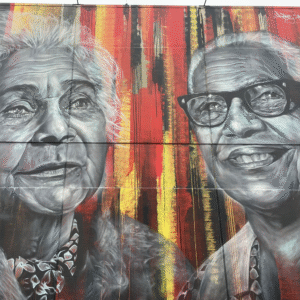17-year-old Noa Gomberg dives into what it’s really like to live in Australia
September 5, 2025
No, I don’t ride a kangaroo to school: The real Australia
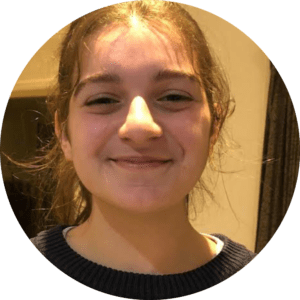
I’ve lived in Australia since I was nine, and I have never ridden a kangaroo to school. I know, I’m disappointed too.
I do understand why foreigners think this – after all, there are more kangaroos than humans here. But they barely scratch the surface of this beautiful country I call home.
Harbingers’ Weekly Brief
The basics
Australia lies in the southern hemisphere, so our summers fall between December and February – so much for a white Christmas.
With a population of around 27 million, the country has a low population density – just 3.53 people per square kilometre. In the UK, for instance, it’s 279 people. That’s largely due to what is known as the Outback: a vast, arid desert covering about 81% of Australia’s land mass, much of which is inhospitable.
It’s also important to acknowledge Australia’s history. The continent was colonisedby the British in 1788, despite being home to more than 750,000First Nations people. The term ‘First Nations’ is an acknowledgement that the Indigenous people of Australia are the original inhabitants of the land.
The British declared it ‘Terra Nullius’ (No Man’s Land), ignoring the presence of its Indigenous custodians. The land was stolen, and the impacts of colonisation, including systemic racism,continue to affect First Nations communities today.
Cultural diversity
First Nations people have lived in Australia for at least 65,000 years. There are more than 250 mobs – a mob is a group of Indigenous people associated with a particular place in Australia – and they all have different languages, practices and cultures. However, they all share a deep connection to what they call ‘Country’ – the land, waterways and seas. Their culture remains integral to Australian society.
Following World War 2, Australia faced a worker shortage and desperately needed to boost the population. This led to a dramatic change in immigration policies and now Australia prides itself on being a deeply multicultural country. Around 31% of Australia’s population was born overseas, with the largest number of migrants coming from India, China and the Philippines.
Immigrants often create their own suburbs and contribute to Australia’s culture through food, art and work.
I live in Caulfield, a Jewish suburb of Melbourne. On Friday afternoons, all the Jewish bakeries and supermarkets are packed with Jewish families buying the essentials for Shabbat night dinner. You have to get to Glicks (a kosher bakery) at 8am if you want the good challah.
Sport
AFL (Australia Football League) or ‘footy’ is a national obsession. With 18 players per team on a large field, the aim is to kick the oval-shaped ball between the goalposts. The season runs from March to September, featuring themed ‘rounds’ such as the Sir Douglas Nicholls Round, which honours First Nations players.
Some fans are so devoted to their teams that parents enlist their children at birth on decades-long waiting lists to become members of the respective clubs. I have a friend who will only receive his full membership at 47. We are 17.
Australians also love a good swim. During summer break, you’ll find us at the local swimming pool, complete with water slides and wave pools, or acquiring second-degree burns at the beach. We’re also quite good at it, amassing 239 Olympic swimming medals.
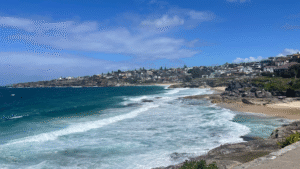
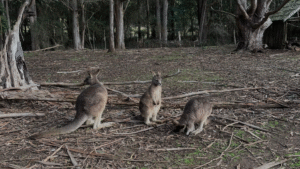


Aussies love many sports, including swimming.
Picture by: Noa Gomberg
Australia is home to most of the world’s marsupials, including kangaroos, wallabies and wombats.
Picture by: Noa Gomberg
Australian Rules football, known as footy, is a national obsession.
Picture by: Noa Gomberg
The Big Design Market in Melbourne.
Picture by: Noa Gomberg
Festivals
Australia hosts vibrant festivals. The Sydney Festival is among the biggest, featuring more than 1,000 artists across 130 events. It is a rich celebration of different cultures, with public art installations, free opera shows and much more.
Moomba is the largest community festival in my home city, Melbourne. There’s a parade, a birdman rally where people launch homemade ‘flying machines’ over the Yarra River, carnival rides and lots of food. Moomba is always packed, usually with older teenagers who are enjoying life before school becomes more stressful, so it can be hard to get into any rides. But it’s definitely worth it to go to hang out with friends, watch the unforgettable fireworks and eat some corn dogs.
Wildlife
Yes, we have spiders – over 10,000 species – but most of them are harmless. And they’ll leave you alone if you don’t try to poke them. What Australians really fear are magpies.
These beautiful, black and white songbirds are smart and social, but very territorial. During the breeding season, they attack or swoop at unsuspecting passers-by. I have often stood in the middle of the pavement, staring at a magpie and praying it won’t swoop me.
You can also find cute marsupials Down Under. The common ringtail possum is about 35cm long, with grey fur and big black eyes that make it look like the perfect pet. But since my mum is terrified of rodents and they’re a protected species, I have to admire them on cold winter nights when they pass by my window or are scrambling on the roof of my house.
Also, a word of advice: don’t try to hug a kangaroo or koala. They may look cute, but the feeling is definitely not mutual.
Written by:

The Harbinger Prize 2024 (Women’s Desk)
Writer
Melbourne, Australia
Noa was born in 2008 in Rio de Janeiro, Brazil, and moved to Australia at the age of nine, where she currently studies. She is passionate about books, history, science, fiction and poetry writing, and social media, with plans to study Politics and Law in the future.
She joined Harbingers’ Magazine in 2024 after winning the Women’s Desk category of the Harbingers’ Prize, writing about current affairs, history, and pop culture. After successfully completing the Essential Journalism course, Noa became a writer for the magazine starting in March 2025.
In her free time, she enjoys writing short stories, poems, and arguing over dinner.
Noa speaks Portuguese and English.
Edited by:
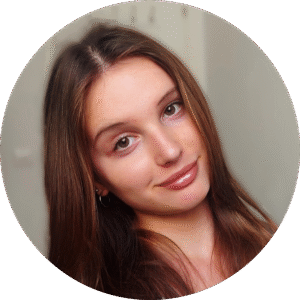
🌍 Join the World's Youngest Newsroom—Create a Free Account
Sign up to save your favourite articles, get personalised recommendations, and stay informed about stories that Gen Z worldwide actually care about. Plus, subscribe to our newsletter for the latest stories delivered straight to your inbox. 📲
© 2025 The Oxford School for the Future of Journalism



